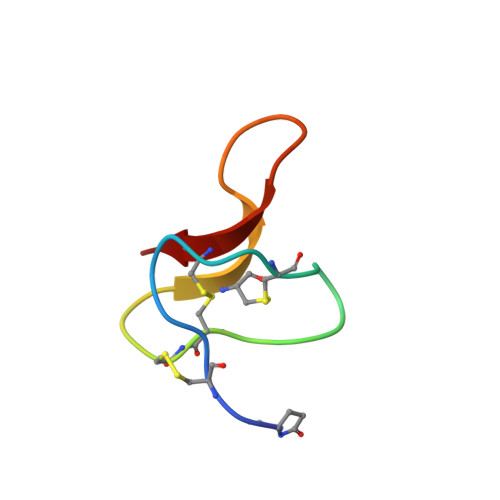High-resolution solution structure of gurmarin, a sweet-taste-suppressing plant polypeptide.
Fletcher, J.I., Dingley, A.J., Smith, R., Connor, M., Christie, M.J., King, G.F.(1999) Eur J Biochem 264: 525-533
- PubMed: 10491100
- DOI: https://doi.org/10.1046/j.1432-1327.1999.00659.x
- Primary Citation of Related Structures:
1C4E - PubMed Abstract:
Gurmarin is a 35-residue polypeptide from the Asclepiad vine Gymnema sylvestre. It has been utilised as a pharmacological tool in the study of sweet-taste transduction because of its ability to selectively inhibit the neural response to sweet tastants in rats. We have chemically synthesised and folded gurmarin and determined its three-dimensional solution structure to high resolution using two-dimensional NMR spectroscopy. Structure calculations utilised 612 interproton-distance, 19 dihedral-angle, and 18 hydrogen-bond restraints. The structure is well defined for residues 3-34, with backbone and heavy atom rms differences of 0.27 +/- 0.09 A and 0.73 +/- 0.09 A, respectively. Gurmarin adopts a compact structure containing an antiparallel beta-hairpin (residues 22-34), several well-defined beta-turns, and a cystine-knot motif commonly observed in toxic and inhibitory polypeptides. Despite striking structural homology with delta-atracotoxin, a spider neurotoxin known to slow the inactivation of voltage-gated Na+ channels, we show that gurmarin has no effect on a variety of voltage-sensitive channels.
- Department of Biochemistry, University of Sydney, Australia.
Organizational Affiliation:

















